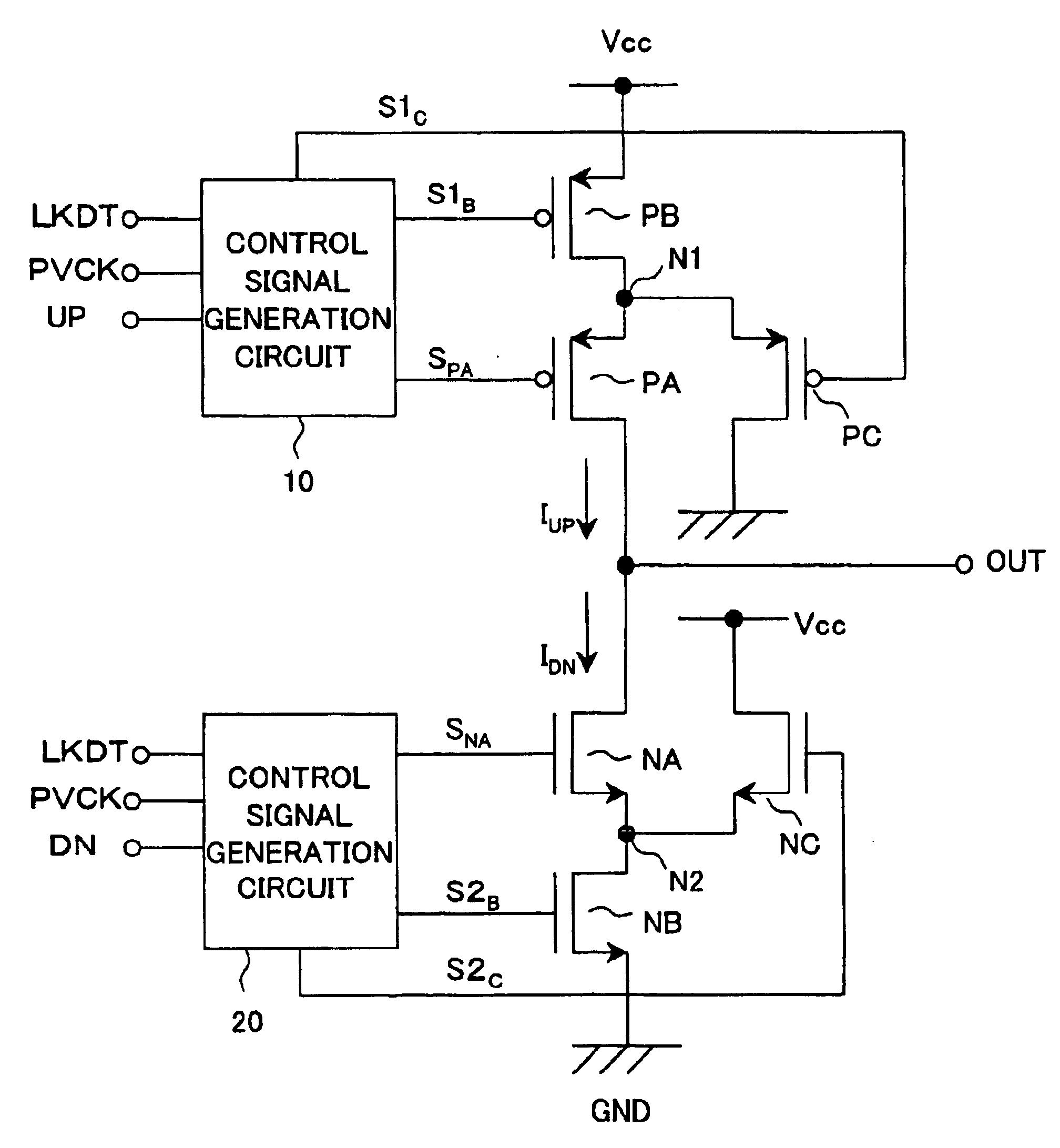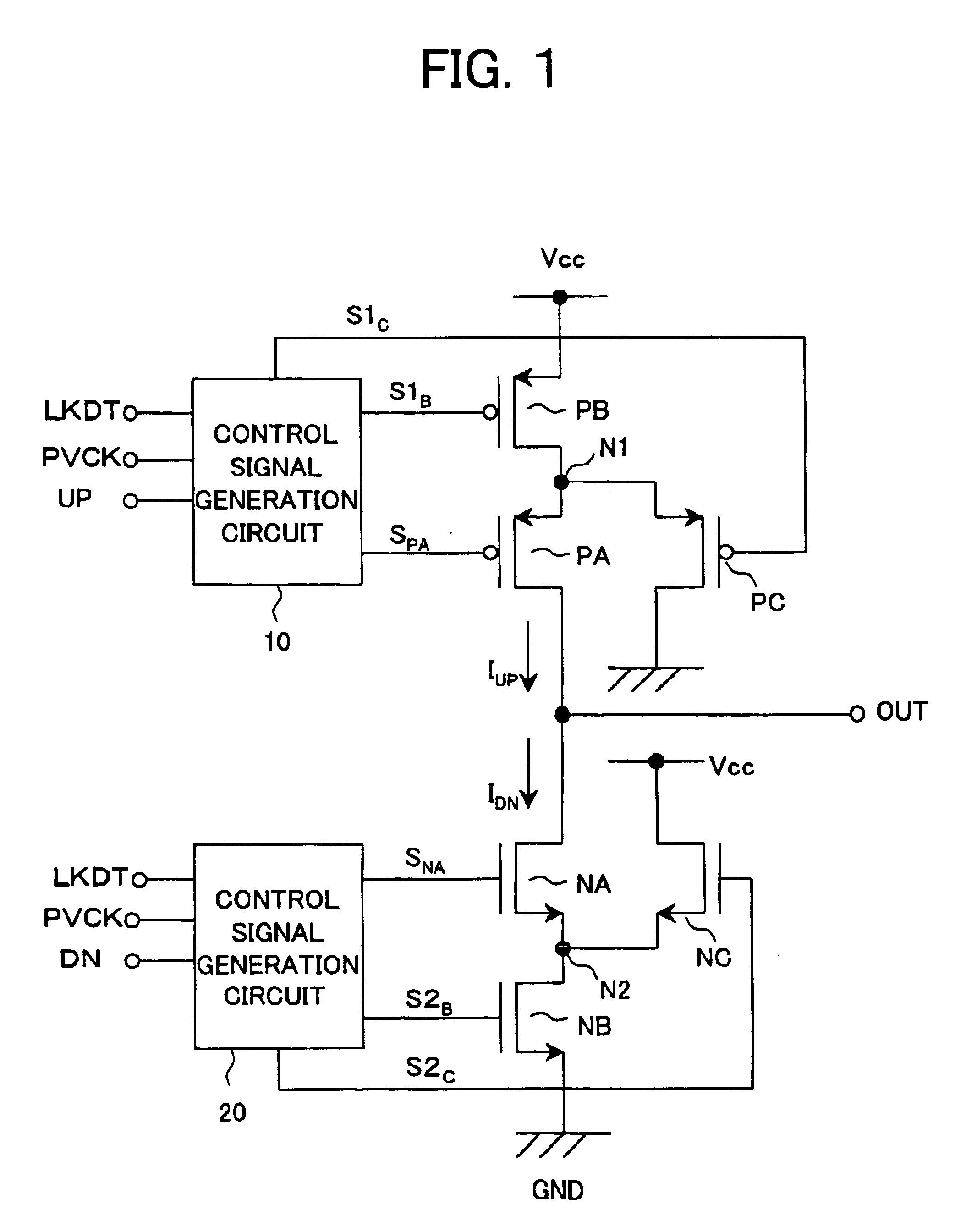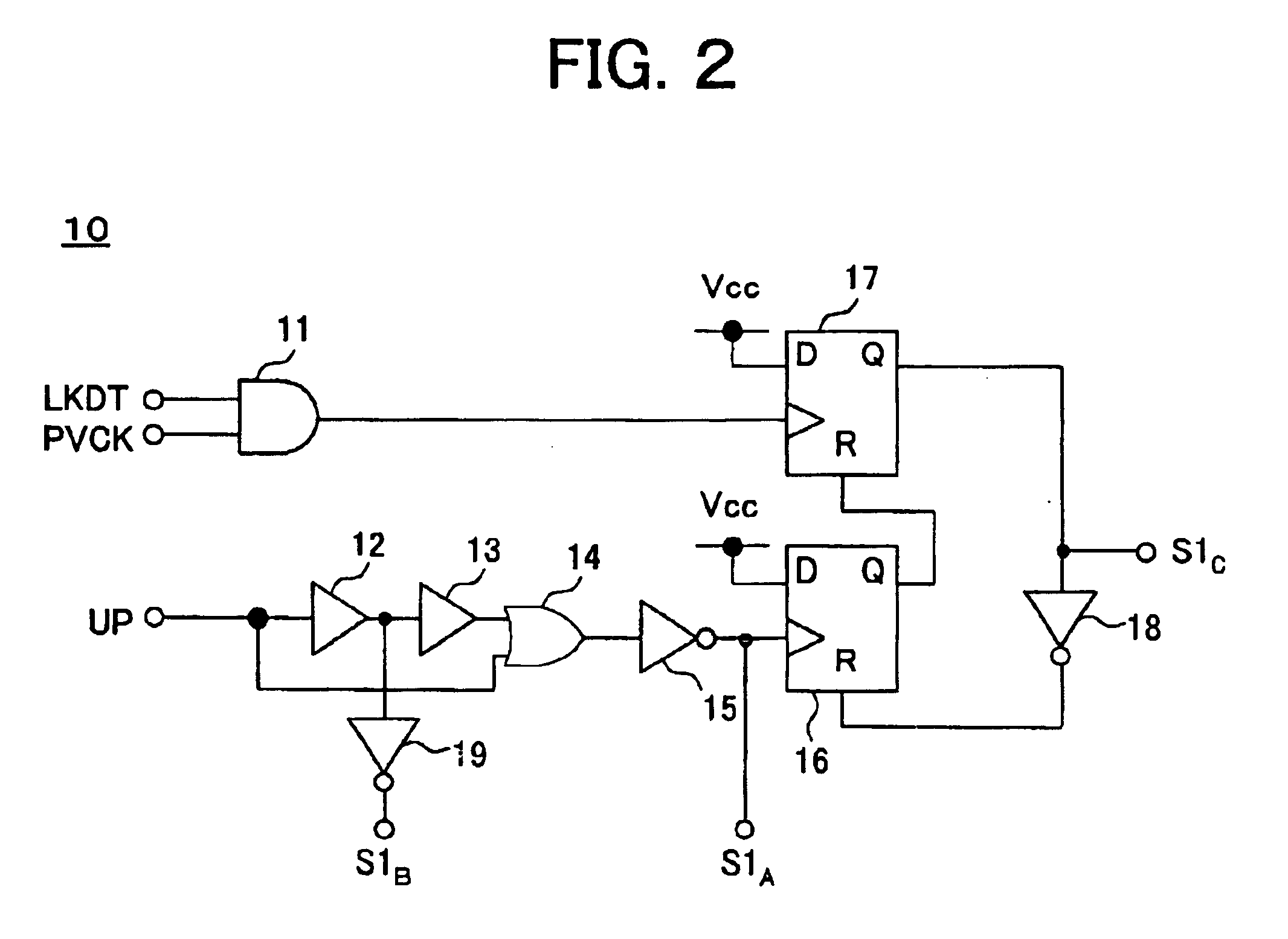Charge pump circuit and PLL circuit using same
a pump circuit and circuit technology, applied in pulse automatic control, dc-dc conversion, power conversion systems, etc., can solve the problems of large current consumption, large current consumption, and inability to solve large current consumption, so as to improve the stability of the oscillation frequency of the vco, large drivability, and high precision
- Summary
- Abstract
- Description
- Claims
- Application Information
AI Technical Summary
Benefits of technology
Problems solved by technology
Method used
Image
Examples
first embodiment
[0042]FIG. 1 is a circuit diagram of a first embodiment of a charge pump circuit according to the present invention.
[0043]As illustrated, the charge pump circuit of the present embodiment is configured by nMOS transistors NA, NB, and NC, pMOS transistors PA, PB, and PC, and control signal generation circuits 10 and 20.
[0044]The transistors PB and PA are connected in series between a terminal of the power supply voltage VCC and an output terminal OUT of the charge pump circuit. Namely, the source of the transistor PB is connected to the terminal supplied with the power supply voltage VCC, and the drain is connected to a source of the transistor PA. The drain of the transistor PA is connected to the output terminal OUT. The source of the transistor PC is connected to a connection point N1 between the drain of the transistor PB and the source of the transistor PA, and the drain is grounded.
[0045]The gate of the transistor PA is supplied with an analog control signal SPA output by the c...
second embodiment
[0110]FIG. 6 is a circuit diagram of a second embodiment of a charge pump circuit according to the present invention.
[0111]As illustrated, the charge pump circuit of the present embodiment is configured by control signal generation circuits 10A and 20A, pMOS transistors PA, PB, and PD, and nMOS transistors NA, NB and ND.
[0112]In comparison with the first embodiment of the charge pump circuit of the present invention shown in FIG. 1, in the charge pump circuit of the present embodiment, an nMOS transistor ND is used in place of the pMOS transistor PC, and a PMOS transistor PD is used in place of the nMOS transistor NC.
[0113]As shown in FIG. 6, in the transistor ND, the drain is connected to the connection point N1 of the drain of the transistor PB and the source of the transistor PA, and the source is grounded. The gate of the transistor ND is supplied with the control signal S1D output by the control signal generation circuit 10A.
[0114]On the other hand, in the transistor PD, the so...
third embodiment
[0120]FIG. 7 is a view of the configuration of an embodiment of a PLL circuit according to the present invention.
[0121]As illustrated, the PLL circuit of the present embodiment comprises a phase frequency comparison circuit 100, a lock detection circuit 110, a charge pump circuit 120, a loop filter 130, a VCO 140, and a frequency divider 150.
[0122]Below, an explanation will be given of the components of the PLL circuit of the present embodiment.
[0123]The phase frequency comparison circuit 100 compares the phases and frequencies of a reference clock signal RCK and the frequency divided clock signal VCK output from the frequency divider 150 and, as a result of the comparison, outputs the up signal UP or the down signal DN in accordance with the phase difference between the reference clock signal RCK and the frequency divided clock signal VCK.
[0124]The lock detection circuit 110 detects whether or not the PLL circuit is in the locked state in accordance with the up signal UP and the do...
PUM
 Login to View More
Login to View More Abstract
Description
Claims
Application Information
 Login to View More
Login to View More - R&D
- Intellectual Property
- Life Sciences
- Materials
- Tech Scout
- Unparalleled Data Quality
- Higher Quality Content
- 60% Fewer Hallucinations
Browse by: Latest US Patents, China's latest patents, Technical Efficacy Thesaurus, Application Domain, Technology Topic, Popular Technical Reports.
© 2025 PatSnap. All rights reserved.Legal|Privacy policy|Modern Slavery Act Transparency Statement|Sitemap|About US| Contact US: help@patsnap.com



